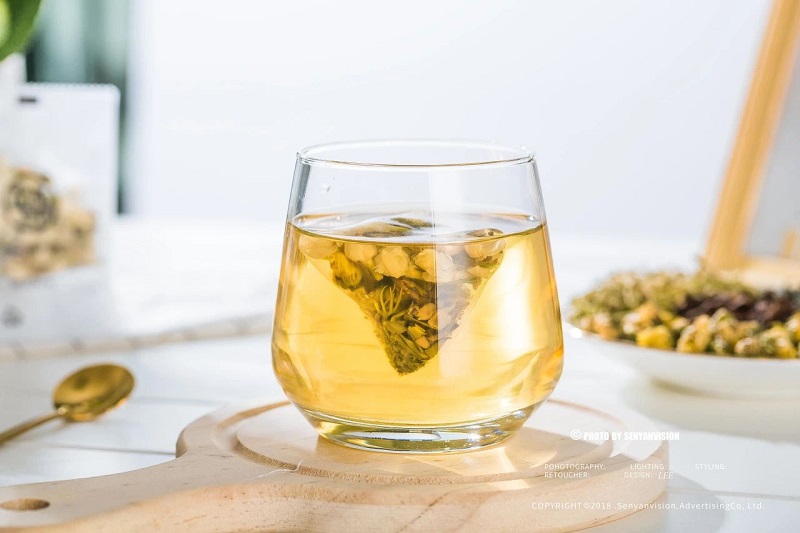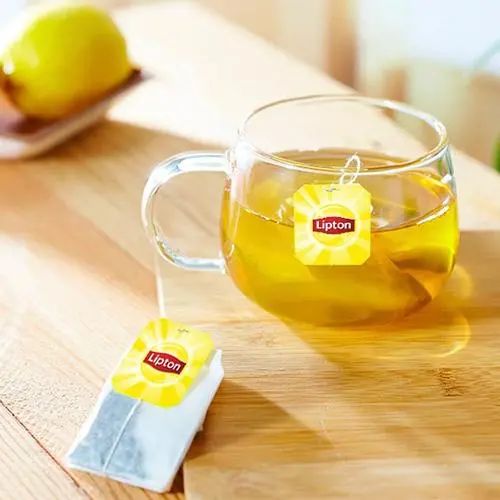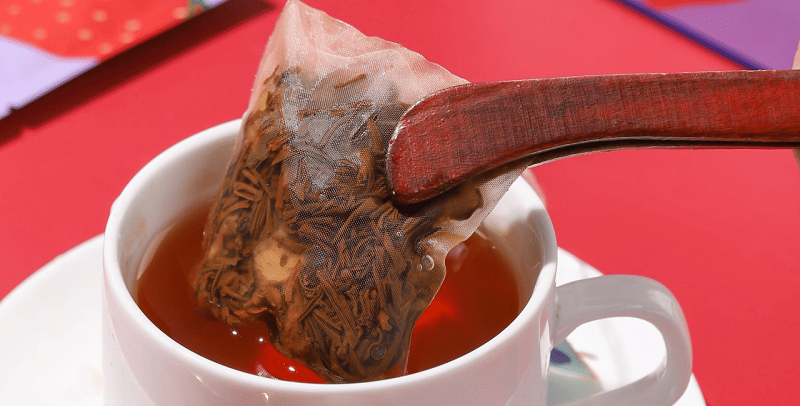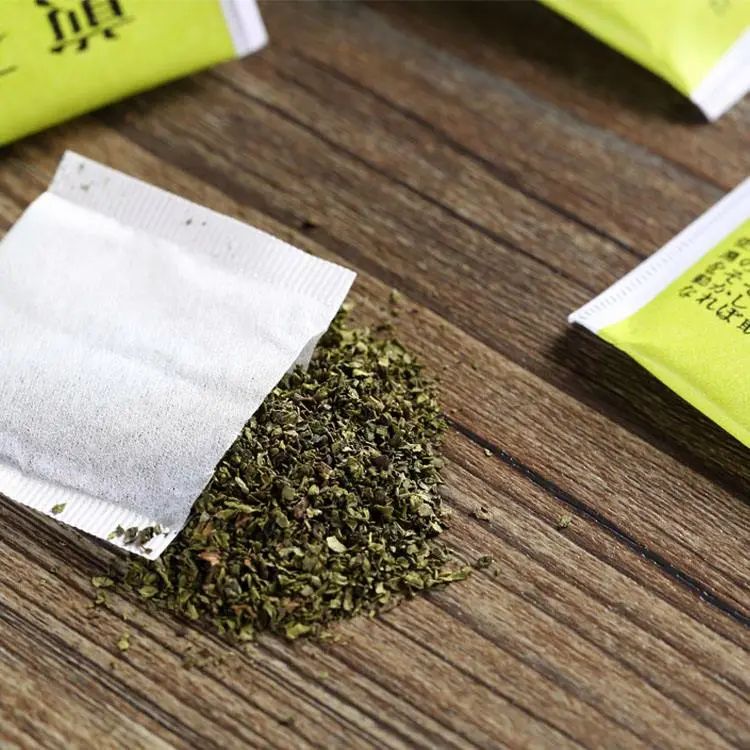Tea bag is a type of tea product that uses crushed tea of certain specifications as raw materials and is packaged into bags using specialized packaging filter paper according to packaging requirements. It is named after the tea that is brewed in bags and consumed one by one.
Tea bags require that the flavor of the tea leaves before and after packaging is basically the same. They are a type of processed tea that changes the brewing of loose tea into bag tea, and the packaging and drinking methods are different from traditional loose tea.
With the acceleration of the pace of life, tea bags have quickly become popular worldwide due to their fast brewing, clean and hygienic, convenient carrying, and suitability for mixing drinks. They are popular in European and American markets and have become the most common way of packaging and drinking tea in developed countries, such as homes, restaurants, coffee shops, offices, and conference halls. By the 1990s, tea bags had accounted for 25% of the world’s total tea trade, and currently, the sales of tea bags in the international market are increasing at a rate of 5% to 10% annually.
Classification of Tea Bag Products
Tea bags can be classified according to the functionality of the contents, the shape of the inner bag tea bag, etc.
1. Classified by functional content
According to the functionality of the contents, tea bags can be divided into pure tea type tea bags, mixed type tea bags, etc. Pure tea type tea bags can be divided into bag brewed black tea, bag brewed green tea, and other types of tea bags according to the different types of tea packaged; Mixed tea bags are often made by mixing and compounding tea leaves with plant-based health tea ingredients such as chrysanthemum, ginkgo, ginseng, gynostemma pentaphyllum, and honeysuckle.
2. Classify according to the shape of the inner tea bag
According to the shape of the inner tea bag, there are three main types of tea bags: single chamber bag, double chamber bag, and pyramid bag.
- The inner bag of a single chamber tea bag can be in the shape of an envelope or a circle. The circular single chamber bag type tea bag is only produced in the UK and other places; Generally, lower grade tea bags are packaged in a single room envelope bag type inner bag. When brewing, the tea bag is often not easy to sink and the tea leaves dissolve slowly.
- The inner bag of the double chamber tea bag is in a “W” shape, also known as a W-shaped bag. This type of tea bag is considered an advanced form of tea bag, as hot water can enter between the tea bags on both sides during brewing. Not only is the tea bag easy to sink, but the tea juice is also relatively easy to dissolve. Currently, it is only produced by a few companies such as Lipton in the UK.
- The inner bag shape of the pyramid shaped tea bag is a triangular pyramid shape, with a maximum packaging capacity of 5g per bag and the ability to package bar shaped tea. It is currently the most advanced form of tea bag packaging in the world.
Tea bag processing technology
1. The contents and raw materials of tea bags
The main raw materials for the contents of tea bags are tea and plant-based health tea.
Pure tea type tea bags made from tea leaves are the most common types of tea bags. At present, there are black tea bags, green tea bags, oolong tea bags and other types of tea bags sold in the market. Different types of tea bags have certain quality specifications and requirements, and it is necessary to avoid falling into the misconception that “the quality of tea bags and raw materials does not matter” and “tea bags should be packaged with auxiliary tea powder”. The quality of raw tea for tea bags mainly focuses on aroma, soup color, and taste. Bagged green tea requires a high, fresh, and long-lasting aroma, without any unpleasant odors such as coarse aging or burnt smoke. The soup color is green, clear, and bright, with a strong, mellow, and refreshing taste. Bagged green tea is currently the hottest product in the development of tea bags worldwide. China has abundant green tea resources, excellent quality, and extremely favorable development conditions, which should be given sufficient attention.
In order to improve the quality of tea bags, raw tea usually needs to be blended, including different tea varieties, origins, and production methods.
2. Processing of Tea Bag Raw Materials
There are certain requirements for the specifications and processing technology of tea bag raw materials.
(1) Specification of Tea Bag Raw Materials
① Appearance specifications: 16~40 hole tea, with a body size of 1.00~1.15 mm, not exceeding 2% for 1.00 mm and not exceeding 1% for 1.15 mm.
② Quality and style requirements: Taste, aroma, soup color, etc. should all meet the requirements.
③ Moisture content: The moisture content of the packaging materials used on the machine shall not exceed 7%.
④ Hundred gram volume: The raw material of tea bags packaged on the machine should have a hundred gram volume controlled between 230-260mL.
(2) Tea bag raw material processing
If the tea bag packaging uses granular tea bag raw materials such as broken black tea or granular green tea, suitable raw materials can be selected and mixed according to the specifications required for the tea bag packaging before packaging. For non granular tea bag raw materials, processes such as drying, chopping, screening, air selection, and blending can be used for further processing. Then, the proportion of each type of raw tea can be determined according to the quality and specification requirements of the tea, and further blending can be carried out.
3. Packaging materials for tea bags
(1) Types of packaging materials
The packaging materials of tea bags include the inner packaging material (i.e. tea filter paper), outer packaging material (i.e. outer tea bag envelope), packaging box material, and transparent plastic glass paper, among which the inner packaging material is the most important core material. In addition, during the entire packaging process of the tea bag, cotton thread for the lifting line and label paper need to be used. Acetate polyester adhesive is used for the lifting line and label bonding, and corrugated paper boxes are used for packaging.
(2) Tea filter paper
Tea filter paper is the most important raw material in tea bag packaging materials, and its performance and quality will directly affect the quality of finished tea bags.
① Tea filter paper types: There are two types of tea filter paper used domestically and internationally: heat sealed tea filter paper and non heat sealed tea filter paper. The most commonly used currently is heat sealed tea filter paper.
② Basic requirements for tea filter paper: As a packaging material for tea bags, the tea filter paper roll must ensure that the effective ingredients of the tea can quickly diffuse into the tea soup during the brewing process, while also preventing the tea powder in the bag from leaking into the tea soup. There are several requirements for its performance:
- High tensile strength, it will not break under the high-speed operation and pulling of the tea bag packaging machine.
- High temperature brewing does not damage..
- Good wetting and permeability, can be quickly wetted after brewing, and water-soluble substances in tea can seep out quickly.
- The fibers are fine, uniform, and consistent, with a fiber thickness generally ranging from 0.0762 to 0.2286mm. The filter paper has a pore size of 20 to 200um, and the density of the filter paper and the uniformity of the distribution of filter pores are good.
- odorless, non-toxic, and meets food hygiene requirements.
- Lightweight, paper is pure white.
Post time: Jun-24-2024









